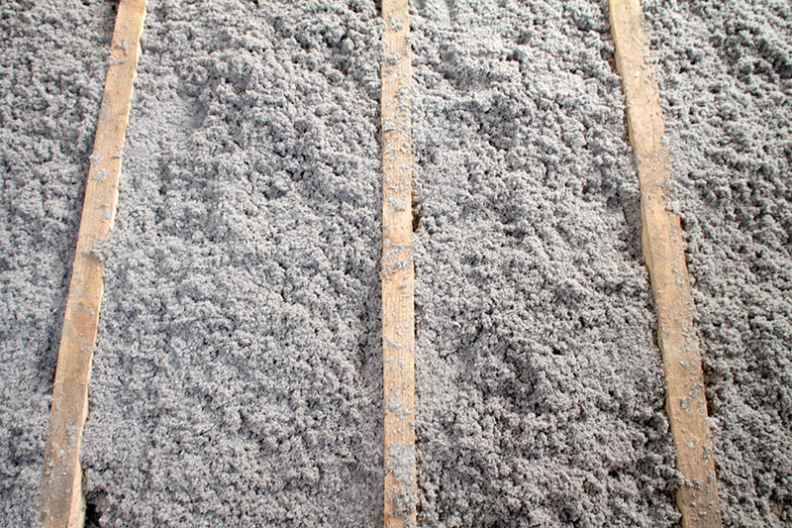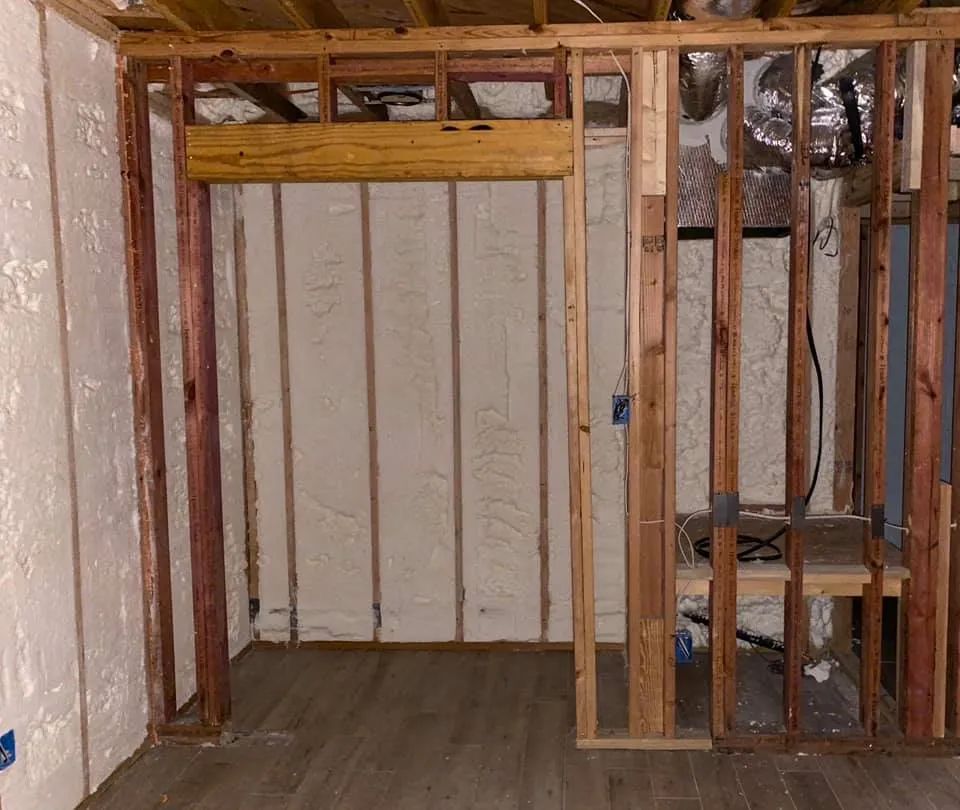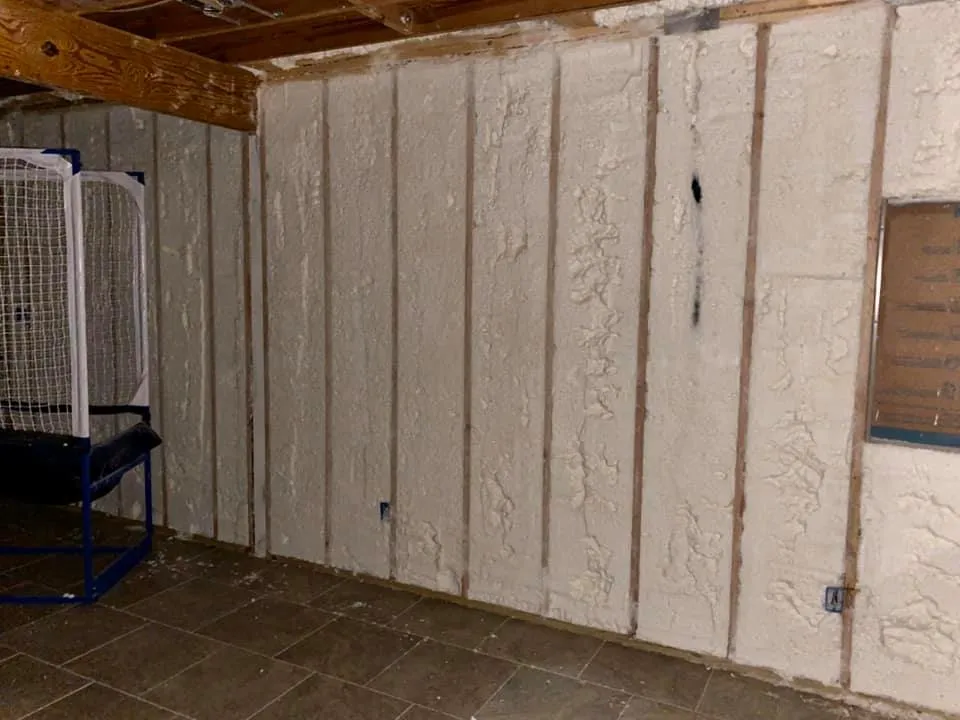When you’re planning insulation for your home or building, you’re not just thinking about what’s cheapest or easiest—you want what works. What lasts. What actually keeps energy bills low without causing problems down the road. At Stellrr Insulation & Spray Foam, we talk with homeowners across Central Texas every day who want to get this right. One question we hear often is about mixing insulation types especially how cellulose plays with others.
Let’s say you’ve got fiberglass already installed, or maybe spray foam in the attic. Now you’re wondering: can cellulose work with that? Should it? What combinations make sense? And how do they affect performance, moisture control, air sealing, and cost?
This guide breaks all that down clearly. No fluff. Just real insights from our experience in the field—helping folks get better insulation results using smart, compatible materials.
By the time you finish reading, you’ll know:
- Where cellulose fits (and doesn’t)
- How it works with spray foam, fiberglass, and mineral wool
- What to avoid
- How we install hybrid systems that deliver real performance
Why Combine Cellulose with Other Insulation Types?
Using multiple insulation materials together isn’t a gimmick it’s a strategy. Especially in existing homes where starting from scratch isn’t realistic. Cellulose adds density and fire resistance. Spray foam brings air sealing. Fiberglass is budget-friendly. Together, they fill in each other’s gaps.
You don’t need to choose between them. You just need to understand how they interact.
Cellulose Adds Mass Where Other Materials Fall Short
Cellulose insulation is heavy compared to fiberglass. That density matters. It slows down heat transfer in a way lighter materials can’t match especially in walls and floors.
In retrofit jobs, we often blow cellulose over fiberglass batts that have settled or sagged. The cellulose packs in tightly, filling gaps and reducing convection currents. That’s a cost-effective upgrade.
In multi-layer attic systems, we might install closed-cell spray foam for air sealing and moisture resistance, then add cellulose for extra R-value and sound dampening. That combo performs better than either material alone and at a lower cost than using spray foam exclusively.
Spray Foam + Cellulose = Tight, High-R-Value Assemblies
Spray foam is excellent for sealing penetrations, rim joists, and attic roof decks. But it’s expensive per inch. Once we’ve sealed the building shell with foam, we can backfill larger cavities with cellulose boosting the total R-value affordably.
We see this strategy work best in:
- Vaulted ceilings
- Bonus rooms over garages
- Attics with limited depth
This kind of hybrid install delivers both airtightness and thermal performance, especially in Central Texas’s humid climate.
Common Insulation Combinations That Work (And Ones That Don’t)
Not all materials play nice together. Some combos can trap moisture or reduce performance. Let’s break down what makes sense.
Pairing Cellulose and Fiberglass: It’s All About Compression
Cellulose over fiberglass batts is one of the most common retrofit combinations. It works well if the original fiberglass is clean and hasn’t been water-damaged. We blow cellulose over the batts, compacting the layers slightly. This limits air movement between the fibers a major heat loss pathway.
We avoid situations where the cellulose becomes too dense for the structure (think sagging ceilings or overloaded drywall). It takes experience to get the balance right.
Cellulose and Spray Foam: A Strategic Blend
Closed-cell foam first, cellulose second. That’s our rule.
Spray foam needs to go directly against sheathing or framing for proper adhesion and performance. Cellulose follows in larger cavities to reduce costs and increase insulation thickness. This approach is ideal when you’re trying to retrofit a poorly sealed attic.
What we don’t do is cover cellulose with foam. Foam traps moisture, and cellulose needs to breathe. We avoid that combo to prevent long-term mold or moisture issues.
Avoid Cellulose and Mineral Wool Mixes in the Same Cavity
Both are dense, fibrous materials. When packed into the same cavity, they don’t layer well. You get uneven density, potential settling, and reduced thermal resistance.
Instead, we’ll pick one based on application needs. Mineral wool has great fire resistance and rigidity—ideal for exterior walls or soundproofing. Cellulose is better for dense-pack retrofits.
How We Design Hybrid Insulation Systems at Stellrr
We don’t guess. Every insulation plan starts with an in-person evaluation. We look at what’s already installed, the condition of the structure, air movement patterns, and moisture risks. Then we design a system that layers the right materials in the right way.
Step One: Air Sealing Comes First
No insulation system works if air is leaking around it. That’s why we begin with foam—either spray foam or caulk/foam board in strategic locations. Once we’ve sealed up leaks, we know the rest of the system will deliver.
In older homes, rim joists, attic hatches, and recessed lighting are huge offenders. We seal those before installing cellulose or fiberglass overtop.
Step Two: Choose Materials Based on Budget and Performance Goals
Sometimes a full foam job isn’t in the budget. That’s where cellulose makes sense. It offers high R-value per dollar, and it’s made from recycled content. We explain where it fits best and when it’s not the right choice.
Our crew adjusts installation techniques depending on whether we’re insulating an attic floor, wall cavities, or crawl spaces. Every space is different and we plan accordingly.
What Happens If You Mix Materials the Wrong Way?
Here’s where problems start.
- Condensation: When a vapor-impermeable material like closed-cell foam is placed on the wrong side of a wall assembly, moisture gets trapped.
- Settling: If you install cellulose over unsupported fiberglass in walls, both can sag over time, leaving cold spots.
- Mold Risk: Improper layering especially cellulose under foam can hold moisture and encourage mold.
These issues aren’t theoretical. We’ve been called to fix them. That’s why we stress proper sequencing, air sealing, and moisture management.
Your Path to a Better-Insulated Home Starts Here
Blending insulation materials the right way isn’t just about R-values. It’s about how your home feels—more comfortable rooms, lower bills, fewer drafts. That’s what we deliver at Stellrr Insulation & Spray Foam.
We don’t offer cookie-cutter installs. We listen to your goals, assess your home, and build insulation systems that make sense for your life.
Got questions about mixing cellulose with what you already have? Want to fix cold spots or lower your energy bills?
Let’s talk. Call us at (512) 710-2839, email info@stellrr.com, or visit www.stellrr.com to schedule your consultation.
Still Curious? Let’s Talk It Through
Can I add cellulose on top of existing fiberglass insulation?
Yes, if the fiberglass is clean and dry. This can increase R-value and reduce air movement through the attic.
Will cellulose settle over time?
Dense-pack cellulose is designed to resist settling when installed correctly. In attic floors, a small amount of settling can occur, but we account for that during install.
Can I mix spray foam and cellulose in the same wall?
Not in the same cavity. Foam should go in sealed spaces cellulose in breathable ones. We’ll design the right application for your layout.
Is cellulose insulation safe?
Absolutely. It’s treated with borates for fire, mold, and pest resistance. We use only top-quality materials.
What’s the best insulation combo for soundproofing?
Cellulose plus fiberglass batts or mineral wool can reduce airborne sound. We target key areas like interior walls and floors over garages.
Can I use cellulose under my roof deck?
Not without a proper vapor barrier. We typically use closed-cell spray foam there.
Is cellulose a good fit for retrofits?
Yes. It’s one of the best for filling old walls and attics without demolition.
How long does a hybrid install take?
Most projects wrap up in one to two days, depending on access and prep work.
How do you test insulation performance after installation?
We use blower door testing and thermal imaging to confirm air sealing and insulation coverage.
Do you offer financing or phased installation?
Yes, we do. Many clients spread upgrades over time. We help you prioritize for the biggest impact first.





